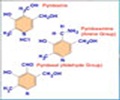Delivering a single dose of visual chromophore to the retinas of diabetic mice rescued visual function and may represent a potential therapy for early diabetic retinopathy.

‘Delivery of visual chromophore to the diabetic eye could be a potential therapeutic option for the early stages of diabetic retinopathy to prevent vision loss.’
Read More..




That finding led to the assumption that early changes in vision in diabetes are probably caused by vitamin A deficiency in the retina," explained lead investigator Gennadiy Moiseyev, PhD, Department of Physiology, University of Oklahoma Health Sciences Center, Oklahoma City, OK, USA.Read More..
In the current study investigators hypothesized that treating diabetic mice with 11-cis-retinal could rescue visual function. They investigated its effect in Akita mice, a genetic model of type 1 diabetes, by measuring electroretinogram (ERG) responses, retinal oxidative stress, and neuronal apoptosis (cell death). ERG was performed on two groups of three-month-old Akita mice and one group of non-diabetic control mice matched for age and genetic background.
One group of Akita mice was treated with 9-cis-retinal and the other with a vehicle solution. Average blood glucose concentrations and body weights of the mice were measured monthly during the study. Akita mice showed high glucose concentrations throughout the study.
ERG recordings and rhodopsin assay were performed two hours after 9-cis-retinal injection, whereas assessment of cell death by ELISA and TUNEL assay were both performed 24 hours after the injection.
Results showed that the visual function in diabetic mice improved significantly after treatment with the single dose of 9-cis-retinal. In addition, researchers reported that the treatment reduced oxidative stress in the retina, decreased retina cell death and retina degeneration, and improved visual function.
Advertisement
This study suggests that the delivery of visual chromophore to the diabetic eye may represent a potential therapeutic strategy for the early stages of diabetic retinopathy to prevent vision loss in patients with diabetes."
Advertisement
However, recent data underscore the importance of vitamin A for normal visual function. It serves as a precursor for light-sensitive 11-cis-retinal, the chromophore of visual pigments that can produce a light-sensitive protein in the retina.
Source-Eurekalert












